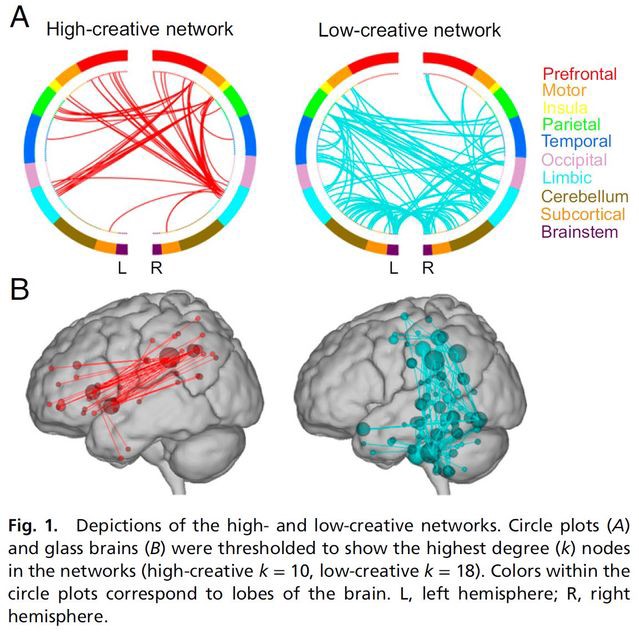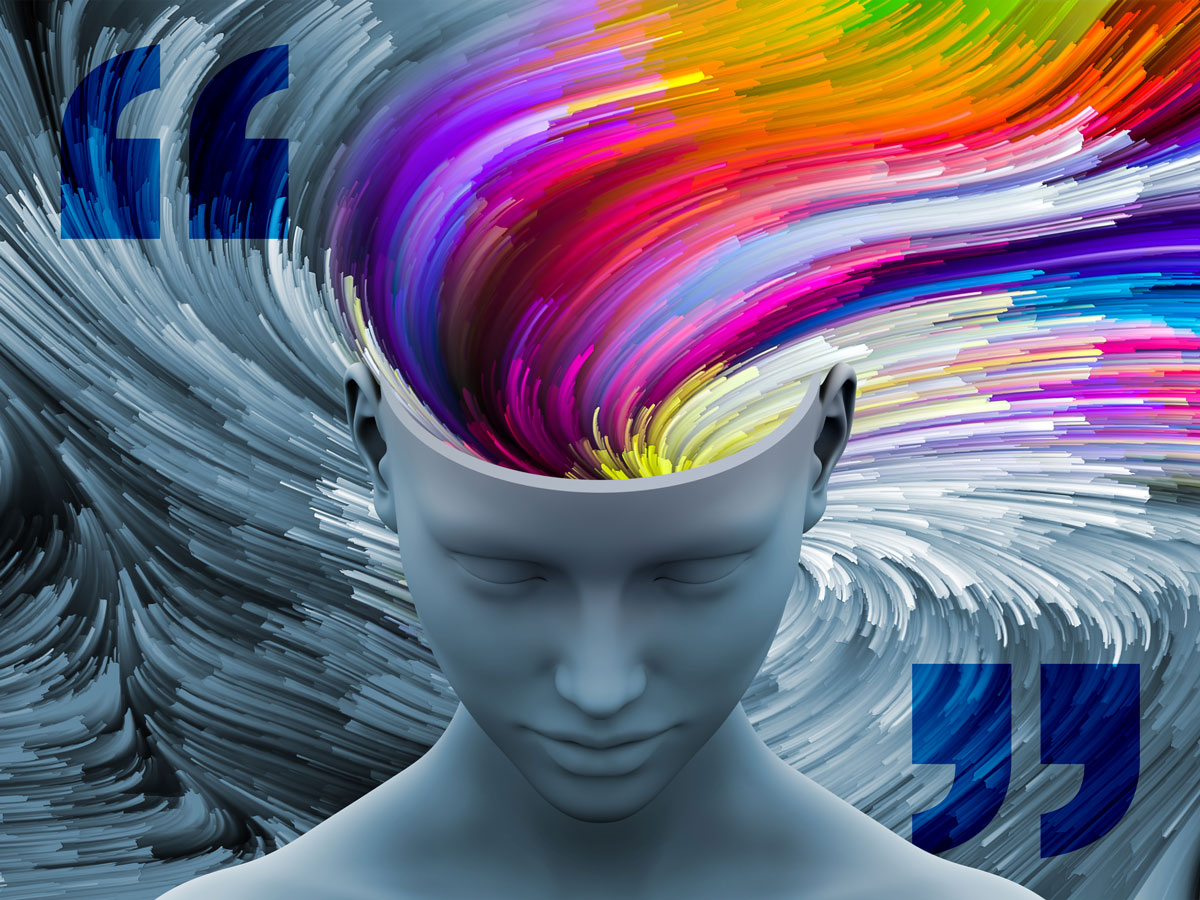By Nicklas Balboa and Richard D. Glaser, Ph.D.
Published in: Psychology Today
A peek into the mind of a creative.
Neuroscientist Rex Jung PhD defines creativity as “the production of something both novel and useful.” Rex teaches that the creative state of mind can be accessed and trained by everyone. The key to accessing your creative mind is to embrace your openness to influence and experience.
Recent advances in brain imaging technology allow us to peek into our minds for first time in human history with robust results. When we look into the mind of a creative thinker, we find that their brain synchronizes across many regions and networks, including the frontal and parietal lobes. Creative thoughts can flow freely and explore many possible solutions in a short amount of time, allowing unexpected solutions to be found!
Low-creative activity is characterized by increased interactions among brain regions that do not support creative cognition. This is also a result of projecting your feelings onto the world around you. One of our human blind spots is believing that people see what we see, feel what we feel and know what we know.
High-creative thinkers co-activate activity among the brain’s executive, salience, and default mode networks, showing stronger connections across both hemispheres of the brain. Creative thought is a whole brain effort.
“It’s the synchrony between these systems that seems to be important for creativity. People who think more flexibly and come up with more creative ideas are better able to engage these networks that don’t typically work together and bring these systems online." - Roger Beaty

Training your brain is the critical component of the creative process. Professor Jung's research identifies the default mode network, a brain network, that when up-regulated, allows us to diminish the “critic in our mind” and improvise. The DMN is also associated with self-referential thinking, affective reasoning and mind wandering. In a recent interview with the late founder of Conversational Intelligence® Judith E. Glaser, Jung details a basic process for activating your creative brain.
4 Steps to Creativity
- Preparation - Ask yourself "What information do I need to brainstorm?"
- Incubation - Give yourself down-time to cogitate, simulate, and enter your creative zone.
- Illumination - By up-regulating the DMN and down-regulating the 'critic in our mind' we allow our brain to improvise and flow freely from idea to idea.
- Verification - Positive feedback and social support are components of co-regulation that encourage an individual or group to co-create.
C-IQ Neuro-Tip: A Creative Boost
When you need to come up with a creative solution, sleep on it. A period of rest should allow you to return to a difficult problem with renewed mental vigor and improve your chances of achieving a solution.
Activities for Promoting Creativity:
- Brainstorming & Journaling
- Learning a New Skill
- Drawing & Listening to Music
- Visualizing
References
Jung, Eugene, R., Mead, S, B., Carrasco, Jessica. A, R. (2013, June 12). The structure of creative cognition in the human brain. Retrieved from https://www.frontiersin.org/articles/10.3389/fnhum.2013.00330/full
Beaty, R. E., Kenett, Y. N., Christensen, A. P., Rosenberg, M. D., Benedek, M., Chen, Q., Silvia, P. J. (2018, January 30). Robust prediction of individual creative ability from brain functional connectivity. Retrieved from https://www.pnas.org/content/115/5/1087









